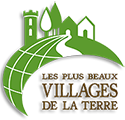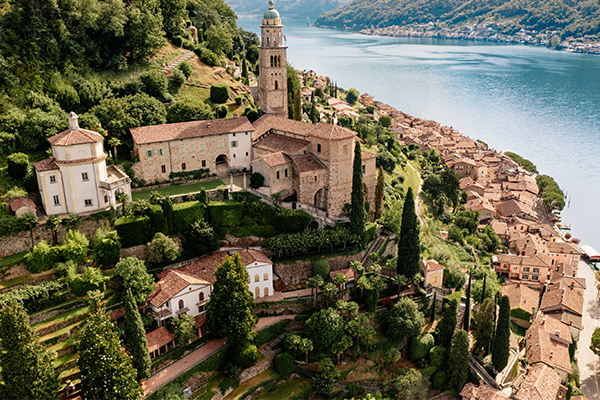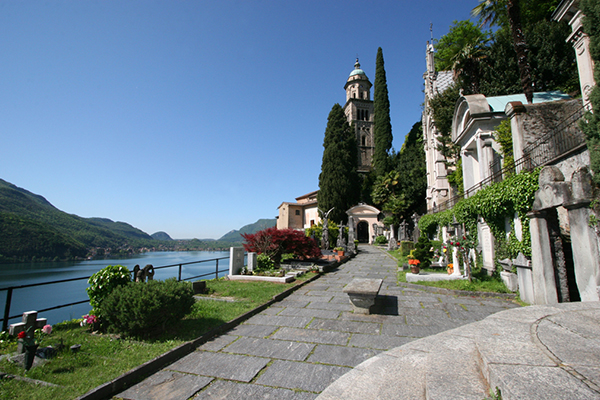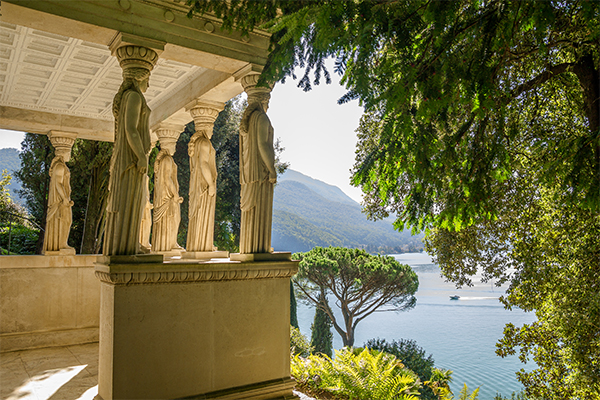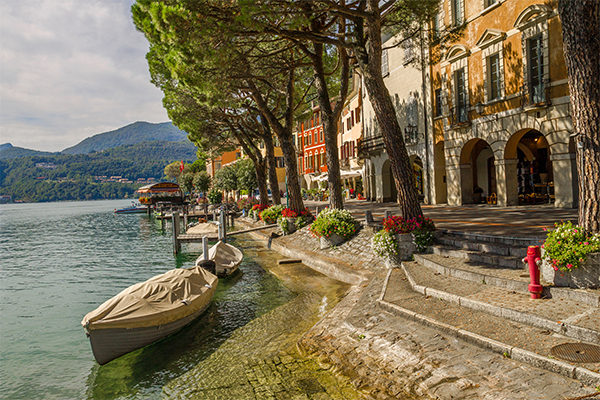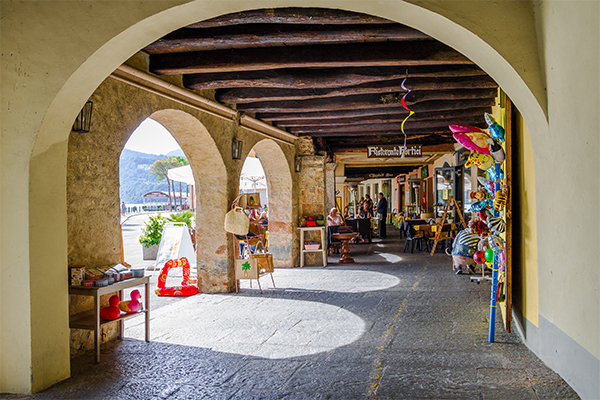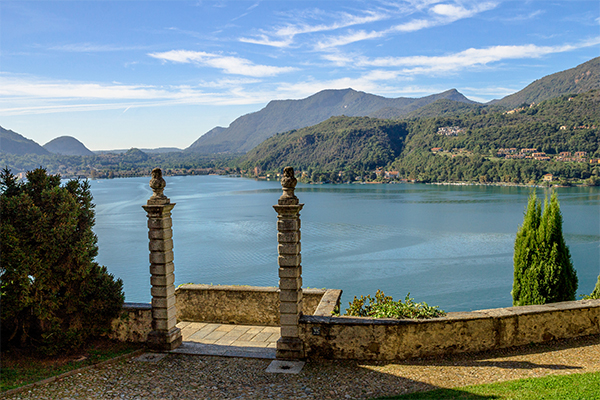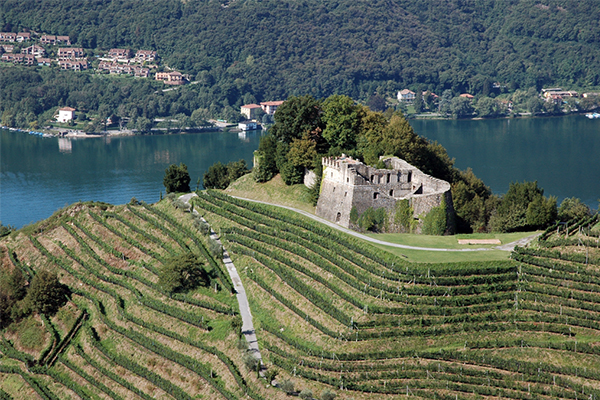Morcote
Morcote is a village overlooking Lake Ceresio, for its obvious beauty and elegance has been nicknamed "the pearl of Ceresio". The narrow streets of the village, the long lake and the climb to the church of Santa Maria are just some of the beauties of this village.
The name Morcote is derived from the protolatin term MORA which indicates a stony area and CAPUT which stands for head or end. MORAE CAPUT therefore means end of the mountain or rock, tip of the peninsula. In a document of 926 the name for the inhabitant of Morcote appears for the first time:
HABITATOR IN MURCAU. In the period of greatest splendour of the ancient village of Morcò, the settlement had the shape of an amphitheatre and extended from Vico Morcote to Porto Ceresio, then called Porto Morcote.
If we want to believe the papal chronicles, the family of the martyr Aniceto, who was Pope from 157 to 168, was originally from Vico Morcote. It is therefore not excluded that Morcote's history may be older.
Until 1847, the year in which the dam of Melide was built, Morcote was a flourishing commercial site and there were intense exchanges of goods, being also the largest port of Ceresio.
Large barges and rafts shuttled between Morcote and Porto Morcote to transport passengers and goods, being in fact the fastest way to reach Varese, Como and Milan.
In 1412 the Morcotesi obtained exceptional statutes, privileges and the coat of arms from the Dukes of Milan. For the 2000 inhabitants of the village, this meant autonomy and therefore the power to proclaim the popular republic to administer the public good. A small parliament elected the podestà, two consuls, twelve judges and the captain. The Morcotesi also had their own jurisprudence and the executioner carried out the death sentences near the executioner's Chapel, at the exit of the village in the direction of Figino. In addition to fishing rights in the Gulf of Porto Morcote, in the Buzzard near Brusino up to the Forca di San Martino near Paradiso, the privileges granted also conferred market rights, such as the sale of fish in Milan and exemption from tolls.
The years following the plague coincided with the beginning of the history of the most famous Morcotensians and their families. Engineers, architects, painters, sculptors, plasterers, chisellers, doctors, scientists, writers and craftsmen contributed to the creation of Western culture in many European countries.
Not to be missed
Features
There are no upcoming events.
| Culture |  |
| Landscape |  |
| Gastronomy |  |
